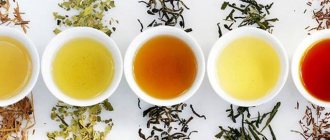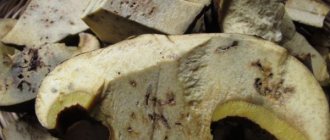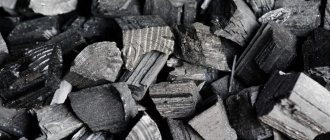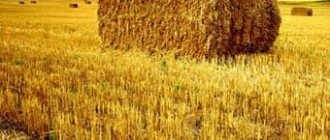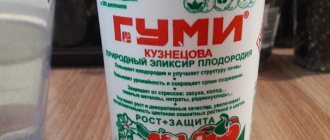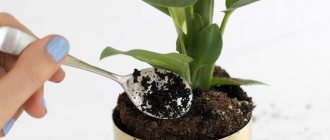How to use potato peelings as fertilizer and why they are useful
Potato peelings are ideal for preparing fertilizer, due to the rich chemical composition of the vegetable crop. In addition to being suitable as a top dressing, vegetable waste reliably protects garden crops from insect pests. In order for the nutrient mixture to be as useful as possible in agricultural technology, it is recommended that you familiarize yourself with the rules for its preparation, storage and use of potato peelings as fertilizer.
Composition and properties of potato peelings
Organic waste on the farm is easily processed by bacteria that live in the soil. Potato peelings are no exception. When the composition is decomposed into nutritional components, the soil is enriched. Fertile soil creates favorable conditions for the development of the root system, and overall plant productivity increases.
Potato peelings contain a large number of valuable microelements necessary for the growing season of various crops.
- Starch.
- Fats.
- Vitamins (C, K, B – 3, 4, 9, etc.).
- Glucose.
- Mineral salts.
- Several types of organic acids.
- Ash elements.
- Nitrogen compounds.
How are they beneficial for plants?
An impressive list of micronutrients naturally and reasonably has a positive effect on the growth of young shoots and the fruiting process of adult plants. Among other things, organics have a number of advantageous characteristics over chemicals:
- accessibility, the ability to accumulate regardless of seasonality;
- the ability to increase the fertility of humus in the soil;
- improving the structure of the soil (regular fertilizing makes it looser and lighter, which allows the root system to receive sufficient oxygen and nutrients);
- in terms of the saturation of valuable microelements, fertilizer from potato peelings is sometimes superior to mineral complexes;
- chemical microelements do not accumulate in the vascular system of plants, which makes the crop environmentally friendly;
- the presence of nitrogenous compounds stimulates the growth of young shoots, but this effect does not apply to weeds.
Using an organic product to fertilize the soil eliminates the contamination of groundwater by chemicals. This is especially important if a source in the form of a well is used for irrigation. The plant itself does not suffer from the composition of potato fertilizer; it cannot be overfed or burned, which is often the case with ready-made mineral fertilizers.
Important! When using fertilizers from potato waste, it should be noted that the product has some disadvantages. Among the main ones: large volumes of raw materials for the production of fertilizing, regular introduction of organic matter, lack of control over the concentration of beneficial microelements. It is also worth taking into account that such a product is not suitable for all crops.
What plants are they suitable for?
The rich composition of the fertilizer from potato peelings is a supplier of fluorine, iron, magnesium, phosphorus, potassium and other substances for the root system of garden and vegetable crops. For example, phosphorus stimulates abundant flowering of ornamental and vegetable plants, potassium gives root crops and berries sweetness and juiciness.
It is especially beneficial to use these properties in the spring, when the root system is formed in young shoots and adult plants awaken after the winter period. It is recommended to use bait made from potato waste for the following types of crops.
- Fruit trees.
- Currants, gooseberries, raspberries and other berry bushes, regardless of variety.
- Decorative shrubs.
- Vegetables, including pumpkins.
- Houseplants, flowers in flower beds.
Potato skins may contain pathogenic microorganisms or dangerous bacteria that infect plants of the nightshade family. To prevent infection of garden crops, you should not use organic fertilizer based on potato peelings for tomatoes, potatoes, eggplants, physalis, peppers, and garlic.
A homemade nutrient mixture made from potato waste is often used to feed indoor flowers. The ideal solution is an infusion, the preparation of which requires a liter jar of peel and 10 liters of settled water. The same fertilizer is applied to the soil under peonies, asters, marigolds and other flowers that react negatively to manure. Varieties that reproduce by tubers (begonias, tulips, gloxinias, gladioli, amaryllis) respond well to a nutritious mixture of potatoes.
To feed a flower garden planted in the open air, it is recommended to administer the infusion once every 3-6 weeks. When watering a plant with fertilizer, you should avoid getting the solution on the greens. Flowers in pots are fed from a stand.
Rules for applying fertilizers on the site
The use of potato peelings as fertilizer is advisable in the spring, when the ground thaws, and in the fall, before the onset of frost. In soil hardened by low temperatures, the plant's root system does not absorb nutrients.
Fertilizer is not applied to dry soil. If there has been no precipitation for a long time, water before application so as not to burn the roots. The more active the growth, the more often the crop is fed. Shrubs and trees in a “wintering” state are not fertilized.
Potato peelings are good as fertilizer for cucumbers and zucchini.
It is important to follow the recommended doses and proportions - it is better to “underfeed” the plant than to burn the roots or cause rotting through negligence.
Fertilizer application timing
Fertilizing in the form of gruel, flour or whole peel is applied before planting seedlings. Watering is carried out with infusions throughout the season. For shrubs and fruit trees, fertilizer should be applied in the spring, when the snow melts and the ground begins to warm up.
Norms and dosage
For seedlings you will need approximately 200-250 g (a glass) of mushy mass for each bush. When using flour, use half as much. If you feed shrubs with whole peel, 1 handful is enough. For trees - two.
The infusion is prepared from 1 kg of gruel and 9 liters of water. To water a plant, you will need from 500 ml to several liters, depending on its size.
Soil enrichment technology
In order for the soil to contain everything necessary for crop growth, it should be enriched with organic and mineral substances. The feeding procedure is carried out regularly. Particular attention is paid to the first year of use of soils during their development.
Potato peelings are supplemented with minerals to fertilize the soil
Potato peelings, as an organic fertilizer, are supplemented with minerals. It is important to remember which plants this fertilizer is suitable for. There is a risk of crop loss if it is used incorrectly.
A popular technology is green manure - sowing certain crops, mainly legumes, and then plowing them into the soil.
Enriching the soil with potato peelings improves its qualitative composition, increases yield, and makes it possible to fertilize plants without the use of chemicals.
The nuances of feeding indoor flowers
Potato peelings are also used as fertilizer for ornamental flowering plants, including indoor plants. Prepare a decoction from raw materials and boiling water, maintaining a ratio of 1:10. The finished product is cooled and filtered. Ornamental plants in flower beds are treated once every 14 days, indoor plants - every 3-4 weeks.
Fertilizing is especially beneficial for plants that reproduce by tubers. These are begonias, tulips, etc. When watering gloxinias, you should be careful not to splash the liquid on the leaves, otherwise it will cause rotting.
How to make fertilizer from potato peelings for the garden
One of the most affordable products in any household is potatoes. Don’t rush to throw away the peel after peeling; it makes an excellent fertilizer. You don’t need to spend a lot of money or time on preparation, and the quality of the fertilizer is in no way inferior to expensive mineral compounds.
This option is especially in demand among residents of private houses and cottages. The collected waste can be dried, frozen or sent to a compost bin. The main thing is not to store the cleaning until pathogenic microflora forms in it. The result is not fertilizing, but real poison for plants.
The raw materials for fertilizer are fresh, raw or frozen peelings. They should be filled with boiling water and left for a day. The resulting infusion is watered over the crops. This fertilizer is ideal not only for garden plants, but also for indoor flowers.
Related article: What to do if potatoes are frozen - how to process tubers
Important! It is not recommended to place potato peelings between bushes; they attract pests and rodents. Uninvited guests pose a serious threat to the harvest.
The process of preparing a nutritious gruel involves infusing the dried skin with boiling water. It's better to do this in a barrel. Fill the container with the workpiece with boiling water until it is completely covered. Infusion time is 1 week.
The technology involves the use of boiling water in order to remove possible pathogens (fungi, bacteria, insect larvae, etc.) from cleaning. After the skin has softened, all that remains is to mix the contents of the barrel, making the fertilizer uniform.
Powdered fertilizer is prepared from dried potato skins. The workpiece is crushed in a blender or using other kitchen equipment. Flour is stored well in canvas or paper bags, but you should not keep it for too long. In such an environment, favorable conditions are created for the development of pathogenic microflora or parasites.
The best time to use the prepared powder product is in the spring, when the beds are being prepared for planting. Flour is added directly to the soil during digging.
Feeding and fertilizer
It is important not only to prepare potato peelings correctly and put them in one of the forms convenient for use, but also to be able to apply them correctly.
Fertilizer based on peelings will appeal to cabbage and cucumbers, all types of currants, pumpkins, fruit trees and home flowers.
Attention! You should not feed peppers, tomatoes, and eggplants with peelings. These vegetables are susceptible to the same diseases as potatoes.
For the garden
- When planting seedlings.
Young plants need a full range of nutrients more than others. Adding potato flour or gruel directly into the holes and grooves facilitates the process of adaptation of crops, promotes their rapid growth and abundant fruiting.
- For feeding a number of melons and melons (cucumbers, zucchini, watermelons, melons, pumpkins).
Cucumbers especially love potato fertilizer. It is used when planting seeds in the ground or when planting seedlings in a greenhouse. To increase productivity, it is recommended to regularly water zucchini and pumpkins, melons and watermelons with infusion from potato peels.
- For radishes, turnips, radishes, garlic and onions.
These plants will appreciate potato infusion more. It can be used as fertilizer after May 20. The intervals between adding the composition should not be less than 14 days.
- For berry growers.
Potato skins are used as a top dressing to fertilize raspberry fields. Flour or infusion is more suitable. But for strawberry beds, powdered fertilizer based on peelings is preferable. Black currants, after adding potato pulp, produce consistently large berries.
For indoor plants
Potato peelings are widely used for feeding house plants. Due to lack of nutrition and lighting (especially in winter), the flowers become faded and begin to dry out. Potato infusion perfectly revives them, fills them with strength, strengthens the immune system, and restores metabolism.
Frequency of use: once every 1-1.5 months.
Experienced flower growers do it simpler: they cool the water after boiling unpeeled potatoes and water indoor flowers with it. Such feeding causes rapid growth of foliage.
Particularly lazy owners simply add raw potato peelings to the soil. But this method of feeding is less effective due to an increased risk of the appearance of pathogenic microflora, fungus, and small midges. This type of fertilizer can only be used for epiphytic or saprophytic crops (including dracaenas and orchids). At the same time, do not forget about drainage. Regular sawdust will do.
How to feed plants
Fertilizing based on potato waste is suitable for almost all plants, regardless of their stage of development. The exception is representatives of the nightshade family.
The ban is explained by the high probability of diseases of fertilized crops due to common infections characteristic of this family.
For seedlings
Shoots at the growth stage especially need nutrients. Gruel or flour from potato peelings is suitable for feeding. When performing planting work, a handful of fertilizer is placed in the formed hole and covered with the same amount of fertile soil.
In such a hole, the seedling will grow faster and will endure the adaptation period more easily. The surface of the soil in the beds can also be sprinkled with flour prepared in advance.
For melons
It is necessary to fertilize the soil with infusion or gruel at the time of sowing the seeds. To do this, a hole is formed, after which a couple of handfuls of fertilizer are introduced into it, then fertile soil, and then the nutrient mixture again. There will be enough useful microelements for a young plant for a long time.
When irrigating beds, it is recommended to periodically use an infusion of potato peelings. The nutrient cushion provides intensive growth of green mass and stimulates the formation of abundant ovaries.
For root vegetables, onions and garlic
For these crops, it is effective to use an infusion. You can water the beds with it from the twentieth of May. Between such feedings there is a break of 2 weeks. Each bush is irrigated at the root. When using a watering can, there is no need to put on a nozzle that disperses liquid; it quickly becomes clogged.
No fragments of potato skin should remain on the surface of the soil after processing, otherwise insects or rodents will flock to such a delicacy. As a result, the plant or fruit may suffer.
For raspberries, currants and strawberries
Fertilizer in the form of flour or infusion is more suitable for berries. For strawberries, use the following feeding scheme: once every 2 weeks, the beds are generously sprinkled with potato flour. The bushes are also watered with the infusion with a two-week break, directing the stream from a watering can to the root.
Currants, especially black ones, respond well to a nutritious mixture of potato peelings. Regular fertilizing provides not only a good harvest, but also high-quality berries, the size of which breaks all records. Every year at the beginning of the season (spring), a porridge-like substance is buried under the bush, burying it 20-25 cm into the soil. Then, during the warm period, the plants are watered with potato infusion. The minimum interval between treatments is 2 weeks.
How to use potatoes as compost
Many summer residents and farmers use potato peelings to make compost. Adding this ingredient to the compost pit (heap) speeds up the fermentation process. It is only important to select the skins of healthy tubers for planting. Otherwise, pathogenic fungi, which are well preserved under any conditions, will provoke infection of the cultivated crops. It is also important to use boiled waste for compost; boiling water quickly deals with dangerous pathogens.
The process of preparing peelings includes grinding the peel, pouring boiling water over it and heat treatment for 5-7 minutes. Proportions: liter jar of peelings, 2 liters of boiling water. After cooking, the contents of the pan are not filtered, simply diluted with water (proportions 1:10). The resulting nutrient mixture is used to irrigate the beds and bushes.
Using Pest Control
Useful, free, safe fertilizer based on potato peelings helps to obtain a generous harvest of vegetable and garden crops, and abundant flowering of ornamental plants. But these are not all the advantages of a homemade product. When applied externally, the nutrient mixture creates reliable protection against pests. To prevent the invasion of parasites, it is recommended to build traps from fresh potato peelings.
It is enough to lay out piles in several places between the rows, to which insects, in particular slugs, will quickly flock. It is necessary to periodically collect pests and then dispose of them. In a similar way, you can get rid of the Colorado potato beetle larvae. The gathered parasites are taken out of the area, doused with kerosene and set on fire.
Potato peel traps buried in several places in the garden to a shallow depth will help you escape from wireworms. Every 3-4 days you need to loosen the planting, collect pests and replace the cleaning.
What plants are they suitable for?
Fertilizing with potato peelings is advisable for almost all garden, garden, and indoor plants. They should not be used only for nightshades. These are tomatoes, eggplants, peppers. Potatoes themselves belong to the nightshade family, so if your raw materials are affected by the disease, it will be transmitted to plants of the same species.
Potato peelings are used as fertilizer for wild strawberries
For berry crops
Potato peelings are used for raspberries as fertilizer in the form of infusion or flour. The soil around the bush is sprinkled with dry powder 1-2 times a month. After watering, when using the infusion, the soil is loosened.
Potato peelings, crushed into flour, are used as fertilizer for strawberries, wild strawberries, and gooseberries. The product is scattered under the bush 2 times a month. Gruel is also used: it is diluted with water, placed in a watering can without a strainer and watered, and the soil is later loosened. You can process strawberries and wild strawberries only before flowering.
For fruit trees
The pulp is diluted with hot water and allowed to brew for several days. The soil around tree trunks is loosened before application. After watering, the mass is embedded in the ground.
Feeding seedlings
Gruel or flour is suitable for seedlings. A small handful of the selected product is placed into the hole, then a thin layer of soil is placed and again sprinkled with fertilizer, then with soil. After this procedure, the sprouts are planted. This method will provide them with the necessary nutrients.
Currants
In the spring, mush or peel soaked in hot water is dropped under the currant bushes to a depth of about 20 cm. It is recommended to do this annually. The procedure is especially effective for black currants. An infusion is also used for feeding. It is used in the spring-summer season with a frequency of 1 time per two weeks.
Potato peelings are also used for fruit trees
Fertilizer of vegetable crops
Gruel is used to feed vegetables, but in this case it does not require dilution with water.
Grooves for seeds and holes for seedlings are dug 10-13 cm deeper than usual. Layers are made sequentially from:
- potato pulp - 1 cup;
- earth – 5 cm;
- peel again - 1 cup;
- soil layer – 5 cm.
After this, the seedlings are planted.
Potato peelings are good as fertilizer for cucumbers, zucchini, pumpkins, onions, and cabbage. For root vegetables (beets, carrots, radishes), the layers of gruel should be from 5 mm to 1 cm.
How to store fertilizer peelings
There is no shortage of potato peelings, which is explained by the popularity of the vegetable and the ability to collect waste throughout the year. However, they cannot simply be stored due to the rapid development of pathogenic microflora. There is no benefit from the rotting mass.
In the warm season, the peel is often used to prepare an infusion or gruel. During the winter, it is better to clean it by drying it and storing it in canvas or paper bags. In the spring they are crushed and used for their intended purpose.
Reference! Regardless of the method of preparing the fertilizer, the potato peels are thoroughly washed with a brush.
Options for drying the skin:
- laying out on cardboard in one layer (the room should be well ventilated and dry);
- heat treatment in the oven at 140 degrees for 2-3 hours (this gives more guarantees for the destruction of pathogenic fungi);
- laying out the skins on heating radiators, processing in an electric dryer.
The drying process is faster if you pre-grind the skin. To do this, it is cut with a sharp knife into small fragments or ground in a meat grinder.
Article on the topic: Diseases of potato tubers: description, photos and treatment
Another storage method deserves attention. This is freezing the workpiece. Washed and crushed peelings do not take up much space in the freezer, and by the spring season they will be quite suitable for fertilizing beds. The only thing you need to pay attention to is the quick use of the workpiece after thawing. If the skin is kept at room temperature for more than 5 hours, the process of rotting will begin.
When storing dry workpieces, use paper bags or fabric bags. They should be inspected periodically in order to promptly identify bugs or parasite larvae.
Before freezing, potato skins should be doused with boiling water and dried thoroughly. Then the fertilizer will retain beneficial substances and get rid of harmful bacteria.
Watch the video on the topic:
Noticed a mistake? Select it and press Ctrl+Enter to let us know.
How to save cleaning until the gardening season
The easiest way to preserve the peel is to freeze it. But this method is suitable if there is a utility room that is not heated. After peeling the potatoes, the remaining waste is placed in a separate container, then covered with a lid. However, it should be noted that at temperatures above 0º degrees the purifications begin to deteriorate. To prevent them from spoiling, they are filled with water and made into an infusion or porridge.
The best option is to dry the peel. It dries quickly. The peelings are dried on a radiator or on a baking sheet in the oven. You can even after you bake something there. Place the dried peel in a linen bag and store in a dry place until spring.
Using potato peelings as plant fertilizer
Potato tubers are covered with skin. It is of no value in cooking, but is actively used in agriculture. The main thing is to properly prepare raw potato peelings as fertilizer and to know what plants they are used for. If everything is done correctly, the farmer will receive almost free fertilizing to increase productivity.
Benefits of feeding from peelings
The use of inexpensive organic fertilizers for the soil allows you to minimize costs and the introduction of chemicals. There are not very many effective natural fertilizers, which forces farmers to look for new opportunities to increase productivity. And if not every household has manure or droppings, potatoes are present on the table of any family throughout the year, and waste from one root crop, even with fine cleaning, is at least 15-20% of the total volume.
There are many advantages to this organic feeding:
- cleaning does not contain nitrates and pesticides - absolutely environmentally friendly;
- You can collect and prepare the peel all year round, even in your apartment;
there is no need to accurately measure dosages, since an excess of such fertilizer does not cause negative consequences;
- Practically all garden, fruit, vegetable, and decorative flowering plants can be fertilized with prepared potato peelings;
- valuable nutrients have a beneficial effect on the soil, improving the degree of aeration and fertility;
- the ease of preparation and application of fertilizing makes this fertilizer an ideal option for those who do not live in their country house all year round and cannot prepare humus, manure, compost and other organic matter.
The versatility of the fertilizer concerns not only a wide range of plant crops, but also seasonality. The seedlings are fed with gruel and watered with an infusion of potato “waste”. In some cases, ground peelings are used, obtaining a product that can be stored throughout the summer season, and not used immediately. Such organic matter is used in spring, summer, and autumn. It is rich in potassium, magnesium, nitrogen, phosphorus and other valuable elements necessary for the plant at every stage of development.
How to prepare?
Organic fertilizer will only be beneficial if properly prepared. Potato waste must not be used fresh. When laid out on the beds, they will begin to rot and attract the attention of rodents. It is not recommended to bury raw peels in the ground. Decomposition will take a long time, and the risk of plantings becoming infected with late blight will increase.
The procedure for “converting” tuber waste into nutritious fertilizers is quite simple. The peel is thoroughly washed, squeezed, dried, and then one of the following harvesting methods is used:
- Drying. The peelings are laid out in a thin layer on paper and left to dry in a well-ventilated area or on the balcony (veranda) for about 7-10 days. The period depends on the thickness of the peel. The oven reduces drying time to 3-4 hours. Readiness is indicated by the fragility and transparency of the waste. The temperature is set to 100 degrees. The oven door is not closed very tightly.
- Freezing. It involves placing absolutely dry, clean potato peels in the freezer. The advantage of this method is maintaining the maximum concentration of nutrients. Freezing also has its drawbacks. It lies in the fact that the peel takes up a significant part of the useful volume of the freezer.
How to improve productivity?
We are constantly receiving letters in which amateur gardeners are worried that due to the cold summer this year there will be a poor harvest of potatoes, tomatoes, cucumbers, and other vegetables. Last year we published TIPS on this matter. But unfortunately, many did not listen, but some still applied. Here is a report from our reader, we would like to recommend biostimulants for plant growth that will help increase the yield by up to 50-70%.
We advise you to prepare in advance for the summer season, pay attention to this biological product. There are a lot of positive responses.
Other feeding methods
Feeding currants with starch from potato peelings is not the only way to get a rich harvest of berries. Other methods of fertilization also give excellent results.
Fertilizing with onion peels
Onion peels for currants are another excellent feeding option. It has a rich composition and has a restorative, immunostimulating and anti-inflammatory effect on the plant. If you feed the plant with onion peels, the currant root system will become stronger and regenerate better, and the crop itself will begin to develop and grow more actively.
Important!
Onion peels are useful only if products prepared from them are used fresh.
The composition of onion peelings includes vitamins, carotene, phytoncides, silicic acid, iron, calcium and potassium salts.
Onion peel
Carotene is responsible for the immunostimulating effect. Thanks to it, currants become more resistant to fungi, microorganisms and rot. The same component is responsible for seed germination and overall plant endurance.
But before fertilizing the currant bush with onion peelings, they need to be properly prepared. This is not difficult to do. They can be boiled, infused, or used for procedures such as mulching. The most important thing is to maintain the correct dosage in all cases.
For example, to prepare a decoction you will need a glass of onion peelings. They should be filled with 2 liters of water and boiled for several minutes. After the broth has cooled, you can start feeding.
Important!
Under no circumstances should you store a decoction of the husks. Otherwise, it will completely lose its beneficial qualities.
In addition to the decoction, an infusion of onion peels will help improve flowering and fruiting of currants (no matter what variety is fertilized: black, red or white). Preparing the infusion does not involve boiling or boiling. It can be prepared using raw cold water. This is done as follows. A bucket of water is poured into a glass of skins, infused for 4-5 days, after which it is filtered and used to water the currants.
Interesting.
If dry onion peels are scattered around the area before digging, you can forget about pest control for a while.
Feeding with eggshells
There is a point of view that the shells of chicken eggs sold in stores are full of chemicals and do not contain any nutrients. Practice shows that this is absolutely not the case. The shells of such eggs contain no more toxins than poultry products. A chicken egg contains useful components such as iodine, phosphorus, sulfur, copper, iron, manganese, fluorine, etc. All of the above helps enrich the soil and makes it more fertile.
Feeding with eggshells
Those who are not very experienced often use egg feeding completely incorrectly. They scatter large pieces of unwashed shells around the area. This attracts numerous birds, but turns out to be completely useless for currants. To use the shell as a fertilizer, it should either be crushed or used to prepare an infusion.
Important!
The smaller the fragments of chicken egg shells, the easier the nutrients from them are absorbed by plants. In this regard, the most correct option is to grind them into powder. This can be done using a hammer, meat grinder or coffee grinder.
Powdered eggshells are added to the soil, which should be dug in a little after applying the fertilizer. When preparing eggshells for feeding, one should not forget that they require thorough cleaning. In no case should any protein residues remain, since its presence may contribute to the development of pathogenic bacteria.
Another way to fertilize currants is an infusion of eggshells. It's easy to prepare. You just need to fill a jar with shells, pour boiling water over it and leave it covered for about a week. Under no circumstances should you be alarmed by the cloudiness of the composition or its unpleasant odor - all these are markers of its readiness for use. When the composition is ready, all that remains is to dilute it with water approximately three times.
Mulching with sawdust
Another way to increase the yield of currant bushes is to mulch using sawdust (in rare cases, gardeners use ash). This method completely replaces fertilizing and allows you to achieve the following results:
- ensure that the required amount of moisture is retained in the soil (sawdust avoids evaporation and the formation of a capillary system);
- reduce the development of weeds (which, in turn, saves time and effort spent on tillage);
- protect the plant from temperature changes (in hot weather, mulch protects the soil from excessive overheating, and in cold weather, it retains heat).
Among the advantages of sawdust mulch are the following:
- ensuring good soil breathability;
- formation of organic substances during decomposition;
- nutrition of the plant with vital elements;
- preventing the berries from coming into contact with the soil;
- prevention of fungal diseases;
- repelling certain types of pests.
Currants respond especially well to mulch made from deciduous trees (with the exception of poplar, oak or walnut). Coniferous mulch is undesirable because it contributes to soil acidification.
Mulching with sawdust
Sawdust as such is not a fertilizer. On the contrary, they have the ability to suck useful elements from the soil. Therefore, the mulch needs to be prepared. Doing this with your own hands is absolutely easy. Several standard buckets of high-quality sawdust should be poured onto the polyethylene film, calcium nitrate should be added to them at the rate of 70 g per 1 bucket, watered, covered tightly with the free edge of the film and left as is. You can use mulch when it darkens. The bottom line is that a large number of microorganisms that process wood into organic matter should have time to form on the sawdust. To make this happen faster, it is important not only to maintain a high humidity level, but also a temperature above +15 degrees.
Any plant needs high-quality fertilizing. And currants are no exception to this rule. Practice shows that to obtain a decent result it is absolutely not necessary to use aggressive chemical compounds. Potato peelings, onion peels, eggshells, sawdust mulch are excellent evidence that organic fertilizers are no worse, and even better from an environmental point of view.
Fertilizing with potato peelings
Many of you have probably heard that potato skins can be used as organic fertilizer for gardening. This is true, since they contain starch, potassium, and other valuable mineral components.
This method of fertilization is absolutely harmless, economical, and helps protect the garden from Colorado potato beetles (as well as their larvae), slugs, and wireworms. How to use potato peelings as fertilizer, for which plants they are suitable as fertilizing - we will consider below.
Plant nutrition
Potato peelings are an excellent fertilizer for vegetable and fruit plants. If you want to get a large harvest of large currant berries the size of a 50-kopeck coin, prepare peelings starting in winter. And starting in spring, bury dry peelings under the bushes or feed them with infusion.
Potato peels are an excellent fertilizer for gooseberries, raspberries, and strawberries. You can feed them in the same way as currants, burying them under bushes or rows of strawberries, or watering them with infusion. It is especially good to add fertilizer at the stage of the appearance of ovaries, during the ripening of berries, before harvesting. Potato fertilizers have a very beneficial effect on vegetable crops.
When feeding with dry or frozen waste, you should not spread it on the surface of the soil, as it will attract the attention of mice. It’s better to bury them, then there will be no smell from rotting, and the beds will look well-groomed and clean.
What benefits do potato peelings bring to the vegetable garden?
During the summer season, potato peelings are used as fertilizer and as protection against certain pests. And as a bait for the Colorado potato beetle or slugs, potato skins proved to be excellent. You just have to spread them out on the surface of the earth before the sprouts appear, and when the pests stick around them (usually this happens at night) - destroy them. This will protect your crop from such a scourge.
It’s good to dig them into the ground near those plants that love starch, which is contained in potatoes in large quantities. As they rot, they will give it back to the soil, thereby replenishing the lack of this product in it. And soaked peelings are an excellent way to ensure that seedlings of some plants take root well and quickly grow stronger.
What is the disadvantage of organic and mineral fertilizers?
In order to increase productivity, mineral (phosphates and nitrates) as well as organic (manure and peat) fertilizers were usually used. But both of these types of fertilizers have a common disadvantage - monetary cost. In addition, organic matter usually heavily pollutes the soil with weeds, and chemical fertilizers tend to accumulate in vegetables and fruits and then enter the human body, thereby creating huge problems for it.
Therefore, modern summer residents are looking for more economical and safe ways to fertilize the land. One of them, which has proven itself very well, is to use potato peelings as fertilizer. This method is known to many, but there have been no negative reviews about it. Only from year to year do we hear more and more positive reviews about him. In addition, it helps protect the crop from certain pests. Therefore, most summer residents turned to such an unconventional method as fertilizing with potato peelings.
For which crops is fertilizer made from potato peelings suitable?
Potato peelings can be used as fertilizer for a vegetable garden or garden, because their use improves the soil and has a positive effect on the harvest anywhere in your area. Let's consider how to use this tool for different types of crops.
Related article: Why potatoes rot in the ground, immediately after harvesting and in the cellar
This natural fertilizer will not affect nightshade crops, in particular: potatoes, eggplants, tomatoes, bell peppers. And given the common infections, the pathogens of which can survive in the fertilizing, the listed plants may still suffer damage.
Fertilizer from potato peelings is recommended for use in early spring for the following plants:
- all types of currants, raspberries, gooseberries, other berries and ornamental shrubs;
- fruit trees;
- strawberries and wild strawberries;
- vegetable crops, especially pumpkin crops;
- flowers, including indoor flowers.
Benefits for various plants
First of all, it is worth noting that fertilizer and fertilizing from peelings are categorically not suitable for plants of the nightshade family, such as:
- tomatoes;
- potato;
- capsicum;
- eggplant;
- nightshade;
- physalis;
- tobacco.
These plants are related, therefore, firstly, the substances and microelements contained in the peelings will simply be useless for them, and secondly, they have common diseases. Such feeding can lead to infection with late blight and black scab.
Note! Heat treatment disinfects potato peelings, killing pathogens of late blight and scab. Therefore, if you dried the peelings in the oven at high temperatures or poured boiling water for infusion, the fertilizer will not harm the plants.
But other plants will be very happy with this feeding in any form:
- Water cucumbers, watermelons, pumpkins, zucchini with a solution with a small amount of grounds at the root.
- Plants of the cruciferous family (rutabaga, cabbage and turnips) respond well to watering at the root with a strained solution of flour from potato peelings.
- Red and black currants. Not only does the overall yield increase, but the berries also increase significantly in size due to the high starch content in the peelings.
- Garden and indoor flowers can also be fed with this fertilizer, especially bush flowers.
Fertilizing with potato peelings significantly increases currant yields
How to properly prepare fertilizer from potato peelings
Potato peelings as a fertilizer for the garden have long proven themselves to be the best. It’s not for nothing that summer residents are trying to find out the best recipe for its preparation. Of course, you can just bury it in the ground. But in this case, along with the cleaning, the remaining phytophthora will also enter the soil. And besides this, it will take longer for them to completely decompose than if they enter the soil in the form of properly prepared fertilizer.
Therefore, it is worth remembering a few rules for its preparation:
- Dried peelings should be crushed to make transportation to the dacha and further work with them easier.
- Chopped dry potato peels are placed in a barrel and poured with boiling water. This will help cope with both late blight and other pests remaining from the fall.
- The grounds formed after soaking are placed in the holes when planting seedlings, and the liquid is watered on top of the plants, which helps not only to fertilize the soil, but also to cope with some pests.
How to prepare fertilizer
The use of fertilizers of natural origin, which are easy to obtain without fear of harm to health, is becoming increasingly popular among gardeners. Potato peel contains a large number of microelements beneficial for plants. These are phosphorus, fluorine, iron, potassium, magnesium. For example, potassium allows you to get juicier and sweeter berries. And phosphorus is responsible for the rapid growth of roots and helps normal flowering of crops.
Potato peelings are a good fertilizer for plants such as gooseberries, currants, raspberries, and many other types of berry and ornamental shrubs. They have a beneficial effect on the growth of fruit trees, wild strawberry bushes, a number of vegetable crops, flowers, including indoor species. The use of such fertilizers for potatoes, tomatoes, peppers, eggplants, physalis and nightshade plants, as well as garlic is not recommended. Since pathogenic fungi sometimes remain on the peel, dangerous for the above-mentioned crops.
It is recommended to dry or freeze potato skins at home. If there is sub-zero temperature outside, it is permissible to lay them out on a cold balcony. With the arrival of early spring, the prepared raw materials should be immediately taken to the site. Otherwise, the peel may begin to rot and give off an unpleasant odor.
Drying potato peelings is more reliable and convenient. Although you will have to spend some time on this. It is recommended to do this on a hot battery. You can place the peel in the oven. To obtain excellent raw materials for fertilizer, it is recommended that after drying, grind the material using a meat grinder and dry it again in the oven. When spring comes, the skins need to be placed in a barrel or other large container. They are usually poured with boiling water, left to soak for a couple of days and stirred from time to time.
Pest control with potato peelings
Another useful property of potatoes is that they are a wonderful bait for pests. It is especially loved by slugs, click beetles (its larvae are popularly known as wireworms) and the Colorado potato beetle.
You need to start setting traps as soon as the first shoots appear or the seedlings are planted in the ground. This way you are guaranteed to protect the future harvest.
A pest trap made from potato peelings is very simple to make.
Making traps is easy. Dig glass jars, old unnecessary buckets and pans, tin cans or cut plastic bottles into the ground so that the edge of the container approximately coincides with the top edge of the hole. The container must be deep enough and without holes. Place potato peelings at the bottom every evening. To enhance the effect, you can pour them with sweet water (a tablespoon of sugar per glass), syrup, or add a little old jam that no one will eat anymore. In the morning, all you have to do is go around the containers, collect the pests caught in them overnight and destroy them. Just don’t throw what you’ve collected over the fence. After a few hours, the slugs and insects will return to your area.
Another trap option is to bury a long piece of wire in the ground with peelings strung on it. Leave one end sticking out of the ground or mark the place where the trap is buried. Once every 2-3 days, dig it out, collect any pests you find and replace the bait with fresh bait.
